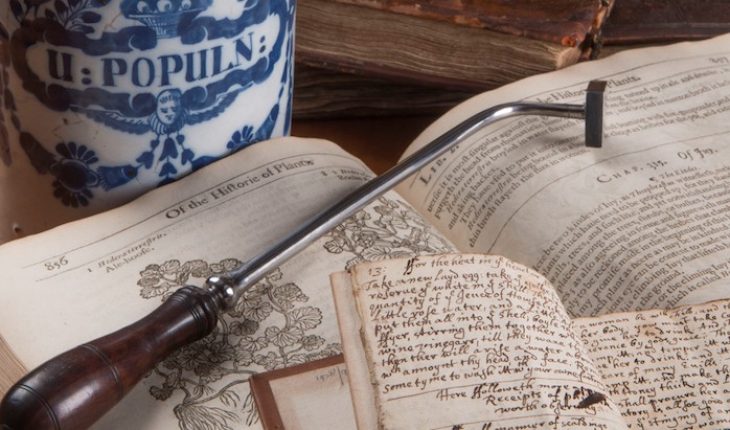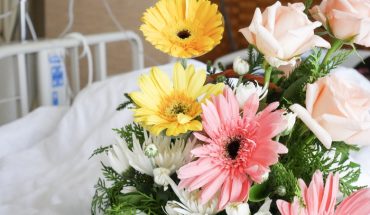A doctor’s eye view of the great fire of London: 350 years ago: Battling with Flames, the plague and noxious fumes – 1666
At the Royal College of Physicians, London, until 16th December, To fetch out the fire: reviving London 1666, marks the 350th anniversary of the devastation of the nation’s capital, taking a doctor’s eye view of the terrible events of three and a half centuries ago. The exhibition curator, Sarah Blackhouse comments, “At the Royal College of Physicians we are incredibly fortunate to be in possession of a collection that spans more than five centuries of London’s history. The 17th century is remarkable as it was both the best of times, for the spirit of intellectual curiosity and advancement, and the worst, for the human misery inflicted by war, plague and fire.”
Using the remarkable collections of the Royal College of Physicians whose home was burnt to the ground in the Great Fire – visitors follow the story of the capital’s 17th century doctors as they were divided by war, battled with plague and almost ruined by flames, only to emerge with hope for the future in magnificent new headquarters designed by scientist and City Surveyor, Robert Hooke.
Featured in the exhibition are artefacts that miraculously evaded destruction at the Royal College including fascinating archives, precious silver, beautiful antique books and a stunning assembly of portraits, some touched by the fire itself and bearing the scars to prove it.
Highlights include a selection of rare 17th century recipe books and herbal medical texts detailing common remedies for burns and scalds that may well have been used on the injured of The Great Fire. These unusual and sometimes odious potions open a window onto the decidedly organic medicine of the time.
From the College’s present day treasures room comes a surviving filigree silver box that once contained a bezoar stone. Taken from the kidneys of antelopes bitten by serpents, these hard lumps were said by ‘quacks’ to ward off the plague that had bedevilled London since the 14th century, a disease that finally disappeared along with the flames of the fire. Nearby are some gold ‘touch pieces’, small coins marked with the image of the archangel Michael and presented by then King Charles I to over 100,000 of his sick subjects at healing ceremonies throughout his reign.
Also on show is a small silver bell, dated 1636, it is thought to be the earliest piece of hallmarked English silver in existence. Rescued from the College’s home at Amen Corner in the shadow of old St Paul’s Cathedral as it was being overtaken by flames, the item is still used today to call for silence during the election of the new President of the Royal College of Physicians.
On loan from The Society of Antiquaries of London is a magnificent oil painting completed in the aftermath of the fire in the style of the Anglo-Dutch school. The image shows old St Paul’s engulfed by flames and the sky consumed by smoke, turning day to night. Recent conservation has revealed that the dark, brooding image caused a later artist to mistake the work for a night time scene, he added a moon and its reflection in the river. Today, a blood orange sun has been restored, the whole vista supporting the testaments of eyewitnesses, also on display, that the conflagration made midday as dark as midnight.
In the final section, the exhibition focuses on the rebuilding of the College and the wider City of London, the designs of Robert Hooke and Christopher Wren, the men who would construct the two greatest buildings of the new capital: St Paul’s and the Royal Bethlem Hospital. Less well known is Hooke’s Royal College of Physicians, a now lost architectural treasure revealed by plans, drawings, a haunting early photograph and contemporary accounts to have been one of the finest flowerings of the resurgent City.
Emma Shepley, senior curator, at the museum of the Royal College of Physicians comments “By the time of The Great Fire, the Royal College of Physicians had been in existence for almost 150 years. Yet the College, like so many of the city’s institutions, had been weakened by the terrible events of the mid 17th century. Civil war had inflicted casualties and divided members along political lines, more recently plague had wrought devastation on London, killing perhaps a quarter of the population and, through looting, deprived the College of many of its precious treasures.” Already facing bankruptcy and
strife, the destruction of its home, ravaging of its priceless library and removal of its source of income by the flames that raged through the city in September 1666 could have finished off the Royal College of Physicians forever. But it didn’t. Instead, London’s medical community revived the injured, rebuilt its headquarters and the profession emerged resurgent. Shepley adds, “It’s a remarkable tale, and in many ways a metaphor for the indomitable spirit of London as a whole. We’re incredibly lucky to be able to tell the story today, on the anniversary of The Great Fire, drawing on our remarkable collections that survived this cataclysmic series of events.”
‘To fetch out the fire: reviving London 1666’ runs at the museum of the Royal College of Physicians from 01 September to 16 December
The exhibition is open 1 September – 16 December 2016, Monday–Friday, 9am–5pm.
Royal College of Physicians, Regent’s Park, London, NW1 4LE
Opening times: Monday-Friday only, 9am-5pm (last entry 4.30pm) **Opening times can vary – check the visiting page for closure days before your visit**
- People’s Choice Victory for Down’s Syndrome Scotland Garden at Chelsea 2025 - 28th May 2025
- Cadogan: A Chelsea Family By Tamsin Perrett - 3rd May 2025
- Dream Worlds a new exhibition in Cambridge - 14th December 2024







